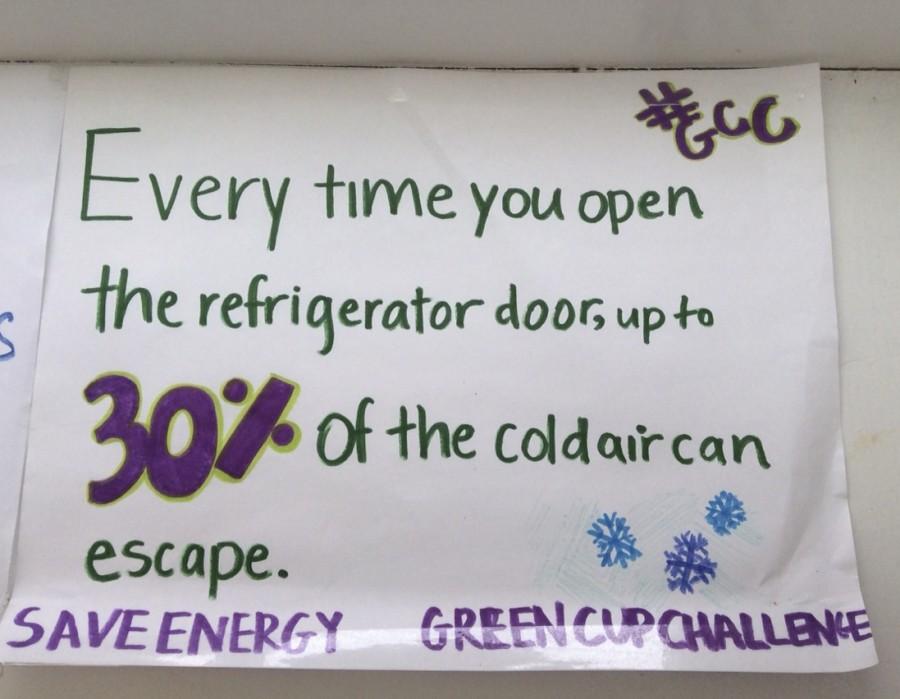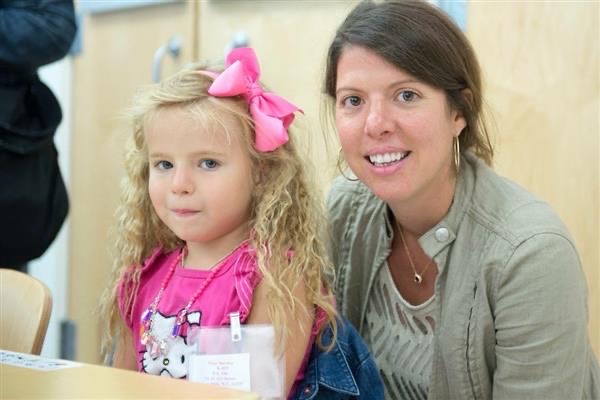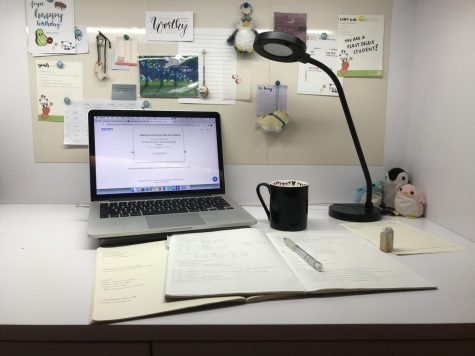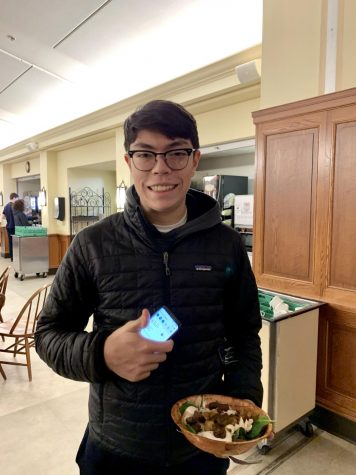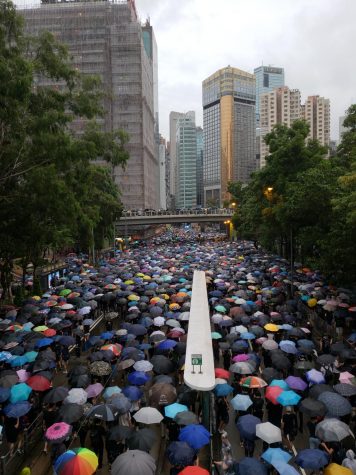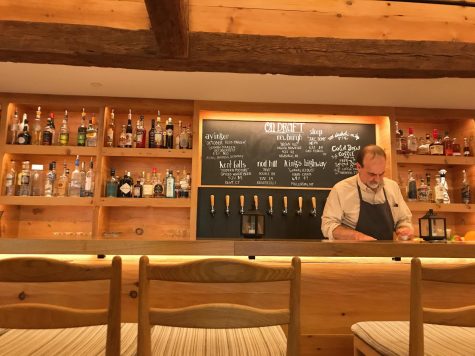Mixed results in the Green Cup Challenge
March 3, 2015
When winter hits Kent, it’s tempting to crank up the heat and crawl under the blankets. Yet the electricity used to keep you warm has a cost: most of it comes from burning nonrenewable fossil fuels that cause. Even more energy is needlessly wasted when people open windows or leave lights on in empty rooms, so this February, Kent’s Environmental Club participated in the interscholastic Green Cup Challenge to help Kent School conserve energy.
For its 9th consecutive year, Kent has participated in the five-week Green Cup Challenge sponsored by the Green Schools Alliance. The short-term goal of the Challenge is to reduce overall electricity usage as compared to past years, while the long-term goal is to make the community more conscientious about energy usage.
To promote the Challenge, members of the Environmental Club posted artistic signs around campus and distributed energy-efficient compact florescent lamp (CFl) light bulbs. For GCC’s Video Challenge, the student band named “Free Block” (Scott Lubin ’17, Thomas Alexander ’16, and Ansh Jetly ’17) put together a creative music video serenading students to “Turn Off the Lights.”
But is turning off lights the only focus of the Challenge? Not necessarily. Turning off lights is one thing, and turning down the thermostat is another, especially when temperatures drop below zero. Because heating also consumes a lot of energy, Mr. Klingebiel, who runs GCC at Kent, gives students extra motivation by organizing some friendly inter-dorm competition; each week the dorm that conserved the most gets a dress-down day, and its dorm parents received cash prizes.
Case Dorm rose to the challenge spectacularly, winning the inter-dorm competition each week. By the end of five weeks, Case had saved over three thousand-kilowatt hours of energy (the equivalent of a coal-burning power plant saving a ton of coal). North saved over two thousand kilowatt hours, while Middle Dorm South and Bordsdorff Hall together saved over 800 kilowatt hours.
Hoerle and Field Dorm, unfortunately, along with other buildings like the Dining Hall, consistently used more electricity than past years. Still, these increases may have happened despite individual conservation efforts. Hoerle, for example, is kept warm by a geothermal heating system beyond students’ control, while the dining hall uses fans to distribute heat.
Overall, Kent used more energy than it has in past years. In other words, there is plenty of room for improvement. “By informing students about global environmental issues through documentaries,” Isaac Chen ’16 suggests, “we can replace old, energy consuming technologies with more energy efficient things.”
Although the campus as a whole could have performed better, most of the dorms consumed significantly less electricity than they did last year. Those results suggest that students and faculty made conservational choices in their every-day routines. “The most important thing about the GCC”, reflects Chen, is “to make energy saving a habit.” In that sense, the Challenge was a success.


